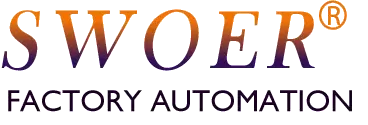The types of vibrating feeders can be mainly classified based on their feeding method, number of tracks, functional characteristics, and applicable screw types. Understanding these types can help you choose the most suitable equipment based on your actual production needs.
The following is a detailed classification:
1、 Divided by feeding method and number of tracks
This is the most basic and common classification method.
Single track vibration feeder
Description: This is the most standard and common model. There is only one main track that spirals upwards inside the vibrating feeder, and only one type of screw can be output at a time.
Advantages: Simple structure, low cost, and strong universality.
Applicable scenarios: Automated feeding of single specification screws, such as screw locking machines and automatic assembly lines.
- Multi track vibration feeder
Description: Two or more independent tracks are designed on a vibrating feeder body. These tracks can simultaneously transport the same type of screw to improve efficiency, or transport screws of different specifications to achieve multi station assembly.
Advantages: Save equipment space, improve overall efficiency, and enable complex feeding.
Applicable scenarios: Assembly of products that require the supply of multiple screws simultaneously; Or in situations where the feeder’s speed of a single screw is extremely high.
- Parallel vibrating feeder
Description: It can be seen as multiple independent single track vibration feeders physically combined together, sharing a base and control system. Each vibrating feeder is responsible for conveying a type of screw, which is then transported through a unified outlet or separately to different workstations.
Advantages: High flexibility, the feeding parameters of each screw can be independently adjusted without interfering with each other. When replacing the product, only one of the disks can be replaced.
Applicable scenarios: The product needs to be equipped with three or more different specifications of screws, and there will be frequent replacement needs in the future.
Divided by function and technical characteristics
This type of vibration feeder integrates more technologies to meet special process requirements.
- Visual selection vibration feeder
Description: Integrated industrial camera and vision system. It can take real-time photos of screws on the track, detect their model, direction, tooth shape, whether there are gaskets, etc., and automatically remove defective products through blowing and other methods.
Advantages: The feeding accuracy is close to 100%, with quality inspection function to ensure assembly quality.
Applicable scenarios: occasions with high requirements for screw quality, easy mixing or strict directional requirements.
- Flexible Vibratory Feeder
Description: This is a revolutionary design. It usually consists of a shaker and a flexible tray with multiple array pinholes. By vibration, the screws on the tray are “suspended” and randomly distributed, and then recognized and grasped by the robot above in conjunction with the vision system.
Advantages: Changing models is extremely convenient, only requiring the replacement of image templates and trays in the software, with almost no need for physical debugging. Very suitable for small-scale and multi variety production.
Applicable scenarios: R&D centers, multi variety small batch production lines, and situations where screw shapes are complex and difficult to orient.
- Side blowing/blowing vibration feeder
Description: For small screws, traditional rail friction feeding may lack sufficient force. This type of vibration feeder is equipped with blowing holes at key positions on the track, which use airflow to assist the screw in advancing or correcting its posture.
Advantages: Improve the feeding stability and speed of micro screws.
Applicable scenarios: Feeding of lightweight screws such as micro screws and plastic screws below M1.0.
